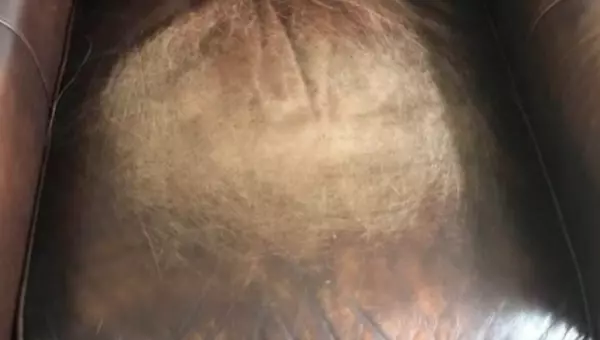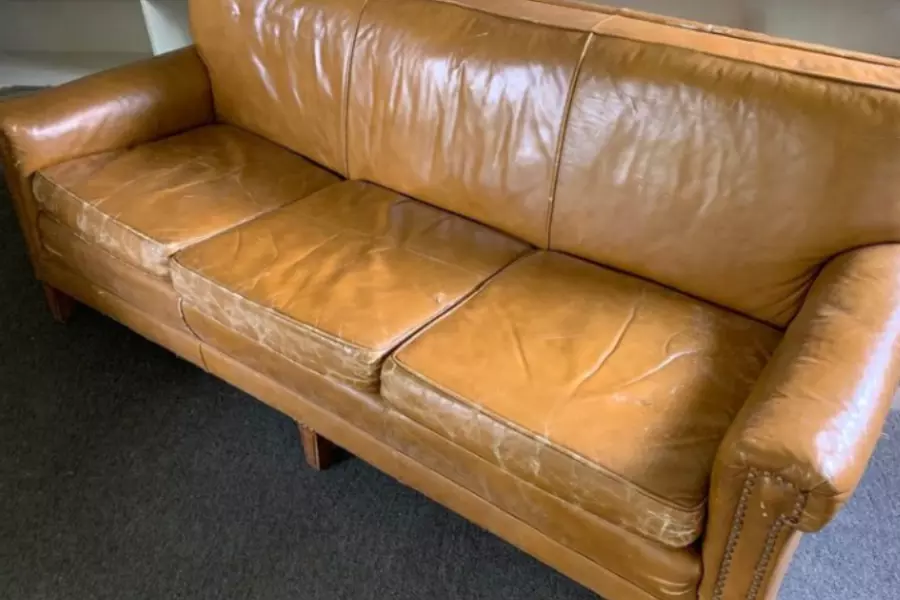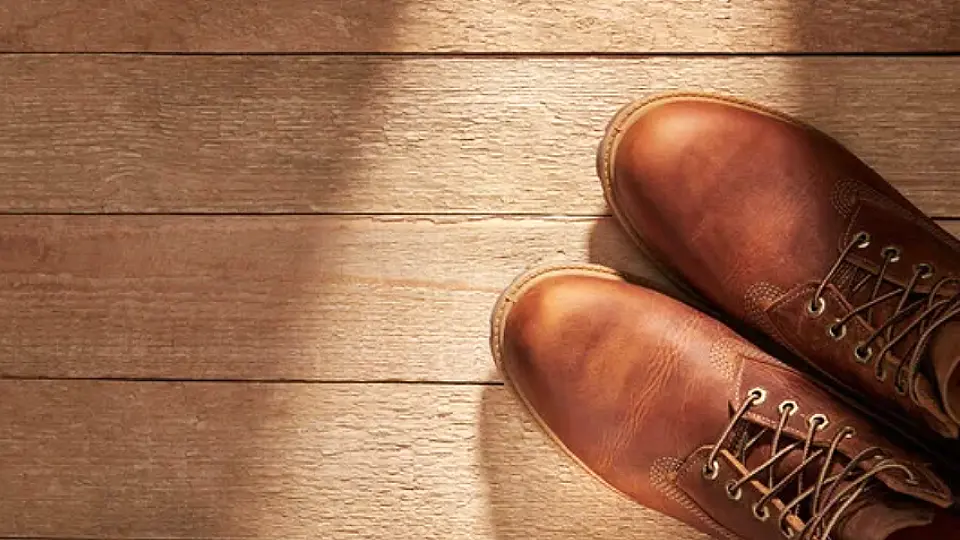Do UV Rays & Sunlight Damage Leather?
No matter if it’s a plush leather couch or a designer leather bag, no one can deny how elegant leather looks when it’s illuminated by sunlight. However, many people aren’t aware that sunlight can actually harm leather if they don’t take the necessary measures to maintain it.
In fact, leather products are often overexposed to sunlight as car interiors are left under the sun, and people commonly wear leather jackets and other leather clothing pieces in the summer.
This overexposure can cause significant damage to the leather material. Over time, you may start noticing that your leather products develop wrinkles and cracks, show discoloration, and even dry out.
In this article, we’ll be discussing how UV rays and sunlight can damage leather, what leather items typically get damaged from sunlight, how to prevent sun damage, and how you can restore & repair sun-damaged leather effectively.
How UV Rays & Sunlight Affect Leather
Leather is a sensitive natural material that can be impacted by the sun’s ultraviolet (UV) rays. Overexposure to sunlight can ruin the appearance of leather and make it look old and uncared for.
Therefore, we highly advise against exposing your leather items to direct sunlight or leaving them to dry under direct sunlight for a longer period. Keep in mind that leather is made of animal skin that contains natural oils and fats, which lend it luster and suppleness.
These elements are key characteristics of leather. However, when your leather articles are left out in the sun for too long, you will begin noticing signs of premature aging, cracking, and drying out.
Ultraviolet rays are more damaging for leather than you think. This is because their intensity impacts leather at a molecular level. For example, if you wear a leather jacket daily under the bright sun, you will notice changes in its appearance after only a few months.
When leather becomes saturated with UV rays either at a high intensity or over a longer period, it loses its natural preservatives and its chemical bonds will slowly break down. This process can give your leather articles a flaky and faded look.
Therefore, prolonged exposure to sunlight can cause your favorite leather jacket, bag, or other items to age prematurely. Moreover, high heat from the sun and excess exposure can also cause the leather to dry out and shrink, which can also be a tricky problem to fix.
Effects of Sun Damage on Leather
The most noticeable change in sun-damaged leather is discoloration. Although discoloration can help build an attractive patina on the leather material, it can look unattractive when it’s overdone or uncared for.
Aside from that, leather is also a highly porous material and can lose moisture just as quickly as it absorbs it. The sun’s UV rays dislocate essential oils and dry out the leather, causing it to appear brittle.

Even though you can renourish your leather items with professional conditioning products, it is nearly impossible to reverse the damage to its fiber structure, due to overexposure to sunlight.
The discoloration paired with the dryness of the material can make your leather article look and feel old. Learn more about the impact on leather articles due to sun damage below:
- Discoloration – Discoloration occurs when the leather is left out in the sun for too long. It is the effect of long-term exposure to UV rays that can cause your leather to lose its vibrant hue.
- Drying – UV rays can dry out the natural oils in the leather. This can cause the material to become brittle and dry out.
- Cracking – If the UV rays have caused the leather to dry out excessively, there are high chances that the leather will develop cracks. You will notice creases and wrinkles forming, which over time can transform into cracks without adequate care.
- Aging – Premature aging is common when leather is overexposed to the sun. Signs of aging may include wrinkling, creasing, and loss of the original shine of the leather.
How Long Does it Take for Sunlight and UV Rays to Damage Leather?
While leather is a porous and sensitive material, its tanning and conditioning layer protects it from the elements for a relatively long period of time. However, the effects of sun damage can happen relatively quickly when leather is left exposed to sunlight for a long period and without proper care.
In about 3 to 6 months, you may notice the color of your leather article fading and in about 1 to 2 years, you may notice the first signs of wrinkling, creasing, and tearing.
What Leather Items Get Damaged from Sunlight?
Common items that are damaged due to overexposure to sunlight include leather furniture, car upholstery, accessories, clothing pieces, bags, wallets, and gloves, among various others.

These leather products are commonly exposed to sunlight due to the way they are used and over time are prone to sun damage, if they aren’t cared for properly. If your leather products are left out in the sun for too long, they may fade, crack, and begin to age.
In summary, leather items that are most prone to sun damage are:
- Leather Car Seats
- Leather Furniture
- Leather Clothing
- Leather Bags
- Leather Upholstery
- Leather Hats
How to Prevent Sun Damage to Leather Items
Keeping all your leather products away from the sun can be a difficult task. However, you can mitigate damage to your leather items and even prevent permanent damage caused by UV rays with proper care.
It’s completely understandable that not all leather items can be kept away from direct sunlight, such as leather furniture, upholstery, or handbags. However, there are some creative tips and tricks that we would like to share with you.
We’ve tested all of these tips over a period of time and can confidently state that they will help to prolong the lifespan of your leather items. So, please read them carefully and apply them whenever you can!
1. Keep Your Leather Items Out of Direct Sunlight
For very obvious reasons that we’ve already highlighted throughout our guide, the best way to avoid sun damage is to keep your leather products out of the sun completely, whenever possible.
Of course, you won’t be able to do this all the time, but if for example, you are parking your car during the day, try to find a shaded spot or a garage where the leather interior will not be as affected.
For furniture that is placed under direct sunlight, try to reposition it elsewhere whenever it makes sense. If you want to avoid overexposure to UV rays in your home, try tinting your windows or rolling down the blinds.
Moreover, you should also always try to avoid drying your leather clothing items in the sun for too long! Drying leather in the sun can cause it to lose its softness and vivid color.
2. Condition Your Leather Products
For leather products that are regularly exposed to sunlight, conditioning them can not only help combat sun damage but can also protect their texture and color. This will help to restore some of their essential oils, adding a protective layer.
For leather furniture, we can recommend a conditioning gel that can be applied easily and that’s leather-friendly. Feel free to check out our Weiman Leather Conditioner Review and our Armor All Leather Care Gel Review to find out why they are great for protecting against sun damage.
3. Protect Your Leather Items
Prevention is the best cure and that principle also applies to products that are made of leather. Therefore, you should protect your leather items from sunlight as much as possible. For example, if you have placed leather upholstery outdoors, you should use covers and casings to shade them.
Leather upholstery on boats should be protected with specialized care products, such as UV protectants and sealed boat enclosures. They can help in shielding it against harsh UV rays and exposure to salt water.
Similarly, leather furniture on patios and balconies should be sheltered from the sun by placing them in shaded areas, protecting them with covers, or shielding them by rolling down the blinds.
How to Restore & Repair Sun-Damaged Leather
In most cases, leather that has been damaged by UV rays can be restored to its original condition. If it’s damaged beyond complete repair, it can still be restored to a point that they’re still usable.
However, you may have to follow specific guidelines and precautions for that to take place. We have listed the following treatment options to restore and reinvigorate leather so that it regains its softness and suppleness.
- Renourishing – A great way to bring sun-damaged leather back to life is to renourish it with a conditioner. Conditioning leather can help you restore the leather’s texture and hue by restoring its natural oils.
- Re-dyeing – Re-dyeing is a method that can help leather regain its natural color and luster. Special care needs to be taken for re-dyeing leather since harsh dyeing chemicals that are not leather-friendly can cause irreversible damage. Re-dying requires you to strip the original tan of your leather, then apply a new layer of dye.
- Reupholstering – If your leather upholstery has been damaged by UV rays beyond repair, it is best to reupholster it with new leather. This solution is most suitable for people whose leather furniture has wrinkled or cracked, where the damage is irreversible.
- Patching – If you want an affordable solution to repair damaged leather items, you could opt for patching. Patching can help you fix minor tears, holes, and cracks in your leather products. Since you can patch leather in the comfort of your own home, it makes the process much easier and quicker.
Where Can I Repair Sun-Damaged Leather?
If you understand the process of leather patching, re-dyeing, or reupholstering well, you can repair sun-damaged leather yourself at home. However, if you’re unfamiliar with these processes or require help, you should consider approaching a leather workshop or the manufacturer for assistance.

About Gerrit
Co-Founder, Researcher & Writer At Leatherskill
I’m a leather enthusiast who spends most of his free time crafting, researching, and writing about the many facets of this versatile material. Thanks for reading!

